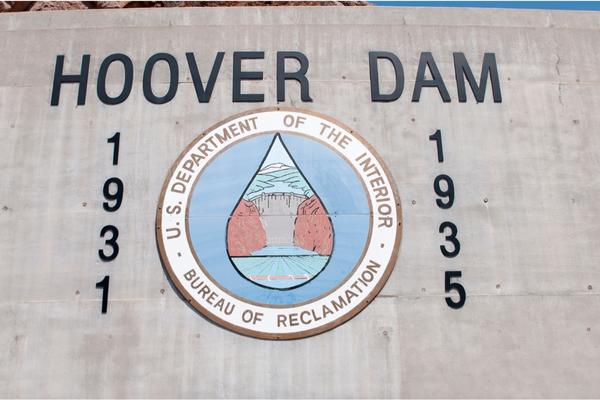Looking out over the Hoover Dam today, you could get a true sense of how climate change is affecting the West.
Aside from the extreme heat, the “bathtub rings” surrounding Lake Mead are an unsettling reminder of how high the water level was before the region’s historic drought started.
The changes are “stunning to see,” said Kristen Averyst, senior climate advisor for Nevada Gov. Steve Sisolak.
“If people don’t think that climate change is impacting them here and now, just go to Lake Mead and have a look around because that paints a pretty clear picture of what we’re up against when it comes to climate change.”
The Hoover Dam and Lake Mead are good examples of how the planet is slowly getting too hot.
The top of Hoover Dam is 45 feet thick, and the bottom is 660 feet thick. The dam stands as tall as a 60-story building.
In the middle of the Great Depression, when it was being built, it was a source of national pride.
So much so that thousands of people traveled through the harsh desert to see what has become a lasting monument of working together for the common good.
Colorado State University’s climate and water expert, Brand Udall, stated, “We bent nature to suit our own needs. Now nature is going to bend us.”
Michael Bernardo is in charge of river operations at the US Bureau of Reclamation.
After surveying the dam’s sloping face from its curved parapet, he admits the lack of water is not like it has been in the past.
Even though the Colorado River doesn’t have a “typical” year, Bernardo and his coworkers were always able to estimate its flow within a specific range.
But scientists say that since 2000, the river’s flow has decreased by 20% compared to the average of the last 100 years.
Only a quarter of what would be considered normal is flowing into Lake Mead, as this is the second driest season on record.
“These are scenarios that aren’t necessarily where we expect to be in our models,” said Bernardo.
Forty million people, including dozens of tribes, depend on the river’s water and the power the dam generates.
“We’re getting those years that are at the extreme ends of the bell curve. We’ve seen extremes we haven’t seen before. We now have scenarios that are very, very dry.”
Droughts caused by climate change and overuse of the Colorado River’s water are lowering Lake Mead and putting the dam’s ability to make electricity at risk.
As of June, the dam could only make about 1,076 megawatts of electricity, which is almost half of what it could do before.
A very challenging water supply situation exists in much of the West.
The current water elevation in Lake Mead is around 1,040 feet above sea level.
The Hoover Dam will be at its lowest point where it can produce power at 950 feet according to the US Bureau of Reclamation.
Without the dam’s electricity, Southwest energy suppliers must look to fossil fuel energy to fill the void.
The Bureau of Reclamation says there is a 1 in 5 chance that the lake will drop to 1,000 feet by 2025, only 50 feet above the minimum level needed for Hoover Dam to make electricity.
“We have already seen the power generation at Hoover Dam decrease about 30 to 40% from its maximum capability over the past ten years,” said the manager of power operations and planning with the Metropolitan Water District of Southern California, John Jontry.
“The amount of water now available across the US west is well below that of any time in modern civilization,” said Park Williams, a hydroclimatologist at Columbia University.
Williams and his colleagues researched tree rings last year and found that the current dry period is second only to one in the late 1500s in the history of drought, which goes back to around 800.
The climate crisis is making the current drought twice as bad as it was in the 1500s.
The country’s second-largest reservoir, Lake Powell, is facing similar challenges.
The water level at Lake Powell is only about 44 feet from falling to the point where Glen Canyon Dam could no longer generate hydroelectric power.
Storage levels are decreasing due to the drought, making it harder for hydropower to work and raising concerns that Glen Canyon Dam may soon reach its minimum power pool, the level below which no power can be made.
For Legal Needs Contact Alexander Shunnarah Trial Attorneys
The personal injury lawyers at Alexander Shunnarah Trial Attorneys publish recent imporant news blogs to keep you up to date on information. Check out our blogs on recent news regularly at https://shunnarah.com/category/latest-news/.
References:
https://www.cnn.com/2022/08/16/us/hoover-dam-hydropower-drought-climate/index.html
https://www.theguardian.com/us-news/2021/jul/13/hoover-dam-lake-mead-severe-drought-us-west
